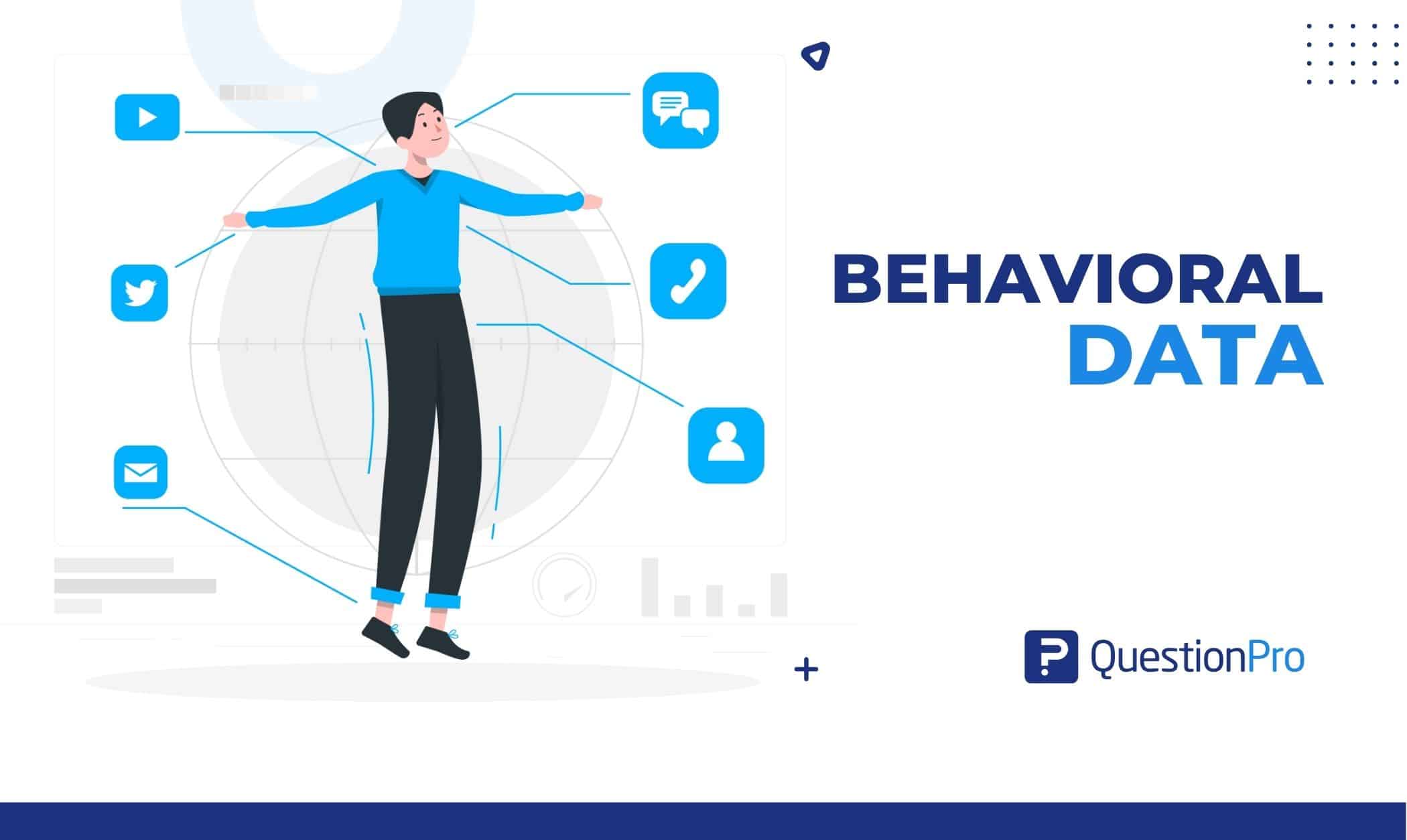
Organizations use the tried-and-true method of customer behavior observation to learn about consumer purchasing patterns. Understanding your audience is essential to growing conversions, engagement, and client retention for your business.
Put your behavioral data to use and let diverse teams of marketers, developers, and engineers produce captivating content, exciting products, and unique customer experiences that directly cater to your customers’ buying needs.
In this blog, we will explain behavioral data, what it is, its importance types, and examples.
LEARN ABOUT: Behavioral Research
What is behavioral data?
Behavioral data paints a clear image of your company by describing interactions with clients, partners, and your apps and systems.
This information, which often appears as rows of events, can come from your digital and physical properties, including your website, apps, IoT devices, infrastructure, server-side applications, CRM, and more.
A customer journey is created for each customer encounter by linking together the entities and properties—contextual information like the page and event location—contained in each event.
Beyond the “what” and “how,” you need to use them to improve your business’s conversion, engagement, and retention. This has to do with how a customer interacts with your business. When you have access to your customer’s behavioral data, you can now study the “why” of their activity.
For example, why does a customer gaze longingly at a specific product but fail to purchase it?
A “customer” in behavioral data can be an individual buyer, a company, or someone purchasing on the company’s behalf. Here’s the important information: Whether the end user is a known or unknown entity, it is always linked to a single end user.
Importance of behavioral data
Your behavioral data increases in value as your firm transitions to digital operations. It is produced through website visits, product views, purchases, content offer page downloads, newsletter signups, and other user interaction activities.
Websites, mobile applications, CRM platforms, marketing automation platforms, and help desks are digital organizations’ primary behavioral data sources.
Better data
Behavioral data helps you understand clients individually, strengthening your business. Combining data from your websites, apps, and devices with enterprise data can alter your marketing efforts and personalized suggestions. This lets you use this data to customize visitor and customer experiences.
Better Analytics
Utilizing a survey tool like QuestionPro for thorough analysis and feedback is the first step in offering your customers a personalized experience. This tool enables your analysts to compile your raw data into dashboards, charts, and visualizations through surveys to further examine your data and insights.
Better Decisions
With behavioral data in a pipeline, you can improve decision-making. Based on business rules, some brands seek to establish an audience of visitors who place a certain item in their shopping cart.
Big data helps these corporations estimate each person’s interests and intent. Past website visitor behavior informs their projections. This is how a global technology company constructs models to anticipate which visitors would buy a specific product and add them to a targeted campaign.
Better Actions
Activating these options for your customers at the appropriate stage of their journey, informed by the kinds of items they look at, in what sequence, and which products they choose to purchase, is the ultimate value of behavioral data.
Types and examples of behavioral data
Organizations could only use data exhaust from existing SaaS solutions to use behavioral data of customers for data applications and analytics. Find out how:
- Exhausting behavioral data
Data from several SaaS products are pulled to create behavioral data exhaust. As a result, it contains various levels of aggregation, exclusive SaaS logic, and differing degrees of quality and completeness.
The result is that when this data is removed from its source, it is used in a manner it was not intended.
One example would be to combine Salesforce data with pageview data from Google Analytics, which is primarily made to be viewed in the Google UI, to try and get a complete picture of reader behavior. It is necessary to separate the two data sets internal logic and structures before combining them.
- Creating Behavioral Data
You wouldn’t use generic prose to explain your product to customers, so why use generic data to describe your user journeys? One-size-fits-all may not fit everyone.
Data Creation is the future. It’s about intentionally creating behavioral data for each data product. Your firm can customize each metric. Predefined session lengths and naming conventions are not in the data. Your event’s contextual entities/properties can be included in the data.
A good example of how to use this custom data comes from Strava, a company that makes digital wearables. They make metrics that define highly customized user journeys, such as how many minutes a user is active in a day, how many miles they run in a session, and so on. This is hard and only works well when exhaust data is used, but it’s easy to do with Data Creation.
LEARN ABOUT: Buying behavior & Consumer Decision Journey
Conclusion
Behavioral data is a valuable resource showing connections between actions, interactions, engagement, intent, and results. Even though this can be very broad or general, it can also look into more and more specific properties of users and events.
Businesses and organizations must carefully draw only a few conclusions from their behavioral data or make too many claims. If data is used to train systems, like ML models, then the user properties should be looked at carefully to avoid discrimination and other forms of bias.
The functions of QuestionPro go much beyond those of a simple survey program. We have a solution for every sphere of the economy and every problem. Additionally, we provide tools for managing data, like Insights Hub, our research data repository.







